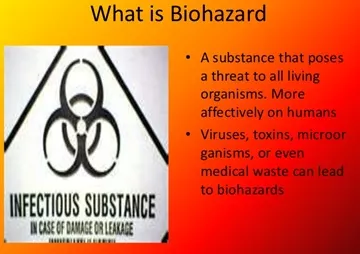Overview of Biosafety
Biohazardous materials/substances may be used in various teaching and research related purposes at UNBC. The use of biological materials/substances in laboratories is regulated by the Public Health Agency of Canada which follows the Canadian Biosafety Standards and Guidelines. The use of biohazards at UNBC is administrated by the Lab Safety Committee, the biosafety officers and is supported by the Office of Research.
It is important to understand the material/substances you are working with as not all ‘biologicals’ are ‘hazardous’. A biological becomes a biohazard only when it poses a threat to the health of a living organism(s) (animal, human, plant) or the environment.
UNBC undertakes legitimate and well-intentioned research which aims to increase and advance knowledge, methodologies and results. At times researchers may need to use Level II Pathogens that could potentially impact the health and well-being of the user and/or the community. UNBC is committed to fostering an environment that protects the health and environment. Those who will be working Level II pathogens are required to complete additional safety training and must demonstrate competency prior to handling these materials/substances.
UNBC is committed to ensuring the health and safety of UNBC and the community and is proactive in mitigating any potential risks that may be encountered. More information can be found in Chapter 3 of the UNBC Biosafety Manual.
Risk Classifications
Biohazardous materials/substances are classified into 4 risk levels. Currently the highest risk category at UNBC is Level 2. There are no Level 3 or Level 4 laboratories on campus. Risk level is determined by the Pathogen Safety Data Sheet (PSDS) of the material/substance you will be working with.

Use of Biohazard materials/substances

- An Internal Biohazard Permit (IBP) application needs to be submitted, reviewed and approved by the Lab Safety Committee prior to any Level II pathogen work
- Additional safety training is required and must be completed before anyone can work with level II pathogens
- Level II biohazard work is completed in specific, inspected and appropriate laboratories which are designated for Level II pathogen work. Level II work is only permitted in these areas
- Access to Biohazardous laboratories is restricted only to trained and authorized users, no visitors or guests are permitted in these areas when biohazardous work is being completed
- Risk assessments will be completed prior to commencing any projects, and may be subject for review at any time during an on-going project
- Risk assessment must be completed by the Lab Safety Committee, Principle Instigator and Bio-safety Officer
- Projects will be monitored regularly and may require updated risk assessments to be completed if there is a potential of any negative discoveries that need to be addressed
- Risk assessments will evaluate the potential for dual-use, before and during all projects, to ensure that these risks are mitigated prior to continuance.
Overview of Biosafety
UNBC pursues a strict Biosafety Safety Program. Biohazardous materials/substances are limited to specific areas, and only trained, authorized users can access them.